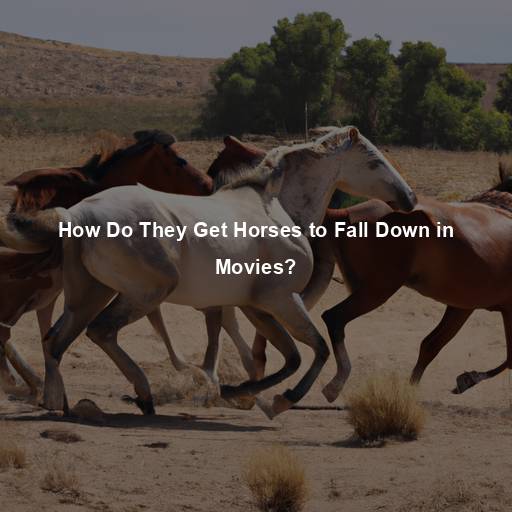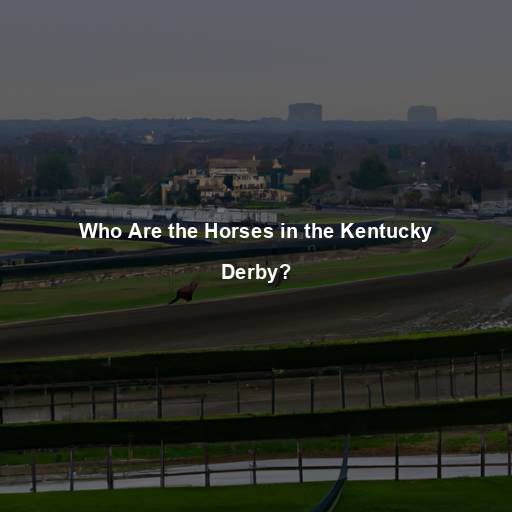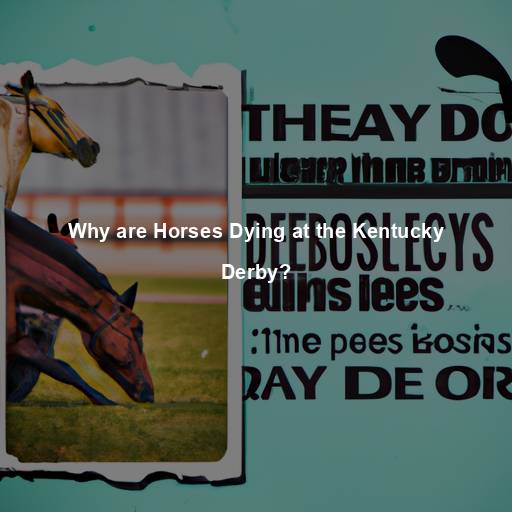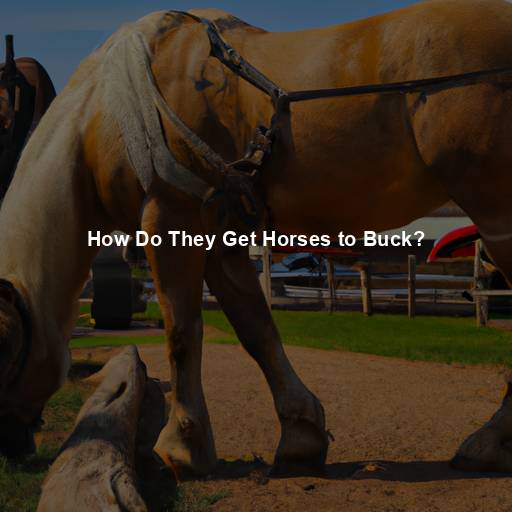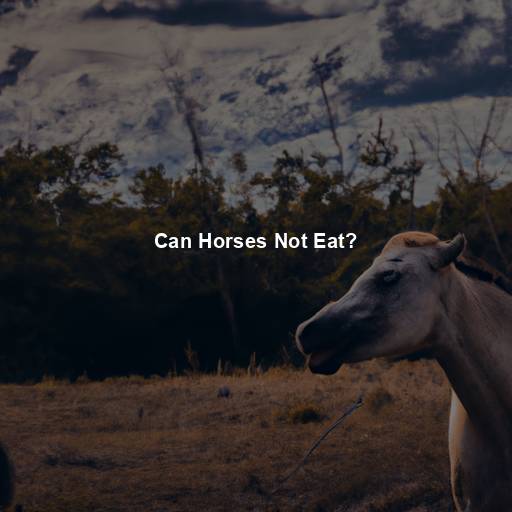How Do They Get Horses to Fall Down in Movies?
Last Updated on November 1, 2023 by Evan
Contents
- 1 Understanding the Art of Stunt Work in Film Productions
- 2 The Technique Behind Horse Falls
- 3 Training and Preparation
- 4 The Evolution of Horse Stunts in Cinema
- 5 Appreciating the Artistry and Skill
- 6 The Ethics of Horse Falls in Films
- 7 The Evolution of Horse Falls in Film History
- 8 The Collaboration Between Humans and Horses
- 9 Appreciating the Craft: Unsung Heroes and Equine Performers
- 10 The Enduring Allure of Horse Falls in Movies
- 11 FAQs
- 11.1 How do they get horses to fall down in movies?
- 11.2 Is it safe for horses to fall down in movies?
- 11.3 Are there any special effects used to make it look like horses are falling down?
- 11.4 Are horses forced to fall down or subjected to harm during filming?
- 11.5 Do horses enjoy performing these stunts?
Understanding the Art of Stunt Work in Film Productions
Lights, camera, action! The world of cinema has always captivated audiences with its thrilling and awe-inspiring action sequences. From heart-pounding car chases to gravity-defying stunts, filmmakers have pushed the boundaries of what is possible on the silver screen. Among these daring feats, one question often arises: How do they get horses to fall down in movies?
The Illusion of Reality: Movie Magic Unveiled
Movies are a gateway to magical realms, beckoning us to surrender our reality and dive headfirst into captivating narratives. Yet, what appears to be genuine before our eyes is nothing short of a calculated symphony, meticulously orchestrated to deceive and bewilder. Horse falls, a dramatic feat often witnessed onscreen, are a testament to the intricate web of artistry at play. This captivating illusion relies on an intricate dance between skilled choreography, exceptionally trained equines, and purpose-built apparatus, leaving us gasping in awe and pondering the boundless imagination of the film industry.
Safety First: The Importance of Animal Welfare
Before we dive into the specifics of horse falls in films, it is crucial to address concerns regarding animal welfare. The well-being of animals involved in movie productions should always be a top priority. Responsible filmmakers work closely with animal trainers and experts to ensure the safety and comfort of the equine actors. Strict guidelines and regulations are in place to guarantee that no harm comes to the animals during any stunts or action sequences.
The Technique Behind Horse Falls
Stunt Doubles: Equine Edition
In the realm of film and television productions, horses possess their own corps of specialists who step in as their stunt doubles. These extraordinary equestrian performers boast a repertoire of abilities, enabling them to flawlessly execute a diverse array of maneuvers and actions required for particular scenes. Particularly remarkable are their skillful horse falls, where these trained doubles confidently take the spotlight. With painstaking training, they master the art of controlled falls, flawlessly mirroring realistic reactions amid heart-pounding moments.
Breakaway Devices and Rigging
In the realm of equestrian stunts in the film industry, a captivating blend of ingenuity and safety precautions paves the way for the awe-inspiring illusion of a horse falling. Amidst this complex choreography, filmmakers skillfully utilize an array of meticulously crafted techniques and devices. One such method involves the ingenious deployment of remarkable breakaway devices that are discreetly positioned on the horse’s ensemble, including its body and reins. When activated, these purpose-built attachments expertly release pressure, enabling the horse to gracefully descend without jeopardizing their well-being.
Creating realistic horse falls in films involves a crucial element called rigging. Skilled riggers employ a blend of concealed harnesses and support systems to carefully control the falls, ensuring the safety of the horse throughout. Ingenious camera angles and post-production editing techniques are utilized to cleverly conceal the rigging and maintain the illusion of a seamless and natural-looking fall.
Choreography and Timing
Crafting an authentic horse fall is a mesmerizing art that demands a meticulous blend of coordination and precision. Collaborating closely with seasoned stunt coordinators and skilled animal trainers, filmmakers delve into the intricacies of the sequence. The synchronized dance between the horse’s fluid movements, the perfectly timed descent, and the actors’ interactions harmonize impeccably, resulting in a breathtaking and captivating spectacle.
Training and Preparation
Building Trust and Confidence
Training horses for stunt work is a gradual process that focuses on building trust and confidence between the animal and its trainers. It begins with basic obedience and desensitization exercises to familiarize the horse with various sounds, equipment, and movements. As the training progresses, the horses are gradually introduced to more complex maneuvers, including controlled falls.
Progressive Conditioning
Creating a secure and nurturing environment for our four-legged performers is paramount in the world of equine entertainment. Every step of their training is meticulously tailored to gradually build their resilience and adaptability. From gentle introductions to controlled scenarios, these magnificent creatures are guided through a dance of progression, ensuring their physical and emotional needs are met. Expert trainers closely observe their charges, ready to pivot and refine as the horses navigate the intricate path of mastery.
Positive Reinforcement and Bonding
Training horses for stunt work relies heavily on positive reinforcement and the establishment of a strong bond between the horse and its trainers. Treats, praise, and petting are used to reward the horse for successfully executing the desired actions. This positive association helps create a cooperative and willing equine performer, ensuring a smooth and successful horse fall sequence.
The Evolution of Horse Stunts in Cinema
From Silent Films to Modern Blockbusters
The use of horses in stunts and action sequences dates back to the early days of cinema. In the silent film era, daring horse-riding scenes and dramatic falls were a staple of Western movies. As technology advanced, so did the techniques used to create horse falls. From mechanical horses to animatronics, filmmakers have continuously pushed the boundaries of innovation to deliver breathtaking and realistic horse falls on screen.
The Impact of CGI
In recent years, advancements in computer-generated imagery (CGI) have revolutionized the way horse falls are portrayed in films. CGI allows filmmakers to create incredibly realistic and visually stunning sequences without putting any animals at risk. While CGI has undoubtedly expanded the possibilities of visual storytelling, there is still a place for practical effects and the use of real horses in creating authentic and emotionally engaging scenes.
Appreciating the Artistry and Skill
The Unsung Heroes: Stunt Performers and Animal Trainers
From the epic cascades of a horse gracefully tumbling on the silver screen, emerges a world of unrelenting passion and relentless teamwork. A harmonious symphony of daredevil stuntmen, empathetic animal whisperers, and meticulous coordinators blend their diverse talents to sculpt these captivating moments. Fuelled by their unwavering dedication, they weave together threads of expertise, masterfully crafting unforgettable cinematic spectacles that leave viewers breathless and longing for more. Through their unwavering commitment to safety and artistic excellence, these unsung heroes make magic happen, creating a paradoxical blend of controlled chaos and mesmerizing grace.
Celebrating the Equine Actors
When it comes to the world of film, equine actors have proven themselves to be more than just mere four-legged co-stars. By effortlessly embodying their roles, they infuse each scene with a level of authenticity and emotional resonance that is truly awe-inspiring. Whether galloping through heart-pounding action sequences or sharing tender moments with their human counterparts, these extraordinary creatures captivate audiences with their unwavering commitment and undeniable brilliance. It is high time we acknowledge and pay homage to these unsung heroes of the silver screen, who continue to leave us both burst with wonder and perplexed in the best possible way.
Evoking Emotion and Heightening Drama
Horse falls in movies serve a crucial purpose in storytelling, often adding an element of danger, excitement, and emotional intensity to the narrative. Whether it’s a heroic act, a tragic event, or a climactic moment, the sight of a horse falling can evoke a visceral reaction from the audience. The combination of stunning visuals, sound effects, and powerful performances can create a lasting impression, immersing viewers in the story and intensifying their emotional connection to the characters and the world they inhabit.
Symbolism and Metaphor
Beyond their immediate impact on the audience, horse falls can also carry symbolic and metaphorical significance. The fall of a horse can represent the loss of power, a foreshadowing of adversity, or the triumph of good over evil. Filmmakers often use these visual metaphors to convey deeper themes and messages, allowing the audience to interpret and engage with the story on a more profound level.
The Ethics of Horse Falls in Films
Ensuring Animal Welfare and Safety
When it comes to the well-being of animals in movies, there’s no denying the importance of prioritizing their welfare and safety. Organizations like the American Humane Association play a vital role in ensuring the ethical treatment of these furry performers. With rigorous guidelines and regulations in place, there’s a dedicated effort to protect animals from any harm that could occur during daring stunts or action-packed scenes, like horse falls. It’s a necessary precaution that safeguards the lives of these magnificent creatures and ensures their involvement in films is nothing but humane.
Responsible Filmmaking Practices
Responsible filmmakers go to great lengths to ensure that horse falls are executed safely and with minimal stress to the animals. They work closely with experienced animal trainers and stunt coordinators who specialize in equine stunts. These professionals have an in-depth understanding of horse behavior, anatomy, and training techniques, allowing them to create realistic and visually stunning sequences while prioritizing the well-being of the horses.
The Evolution of Horse Falls in Film History
Historical Context and Cinematic Traditions
The portrayal of horse falls in movies has evolved significantly over the years, reflecting changes in technology, storytelling trends, and societal attitudes. In the early days of cinema, practical effects and real horse falls were the primary means of achieving the desired visual impact. As filmmaking techniques advanced, alternative methods such as mechanical horses and animatronics were introduced. Today, CGI has revolutionized the way horse falls are portrayed, offering limitless possibilities for creating breathtaking and realistic sequences.
Cultural Significance and Genre Influence
The depiction of horse falls in films often varies depending on the genre and cultural context. In Western movies, horse falls were once a staple, representing the dangers and challenges faced by cowboys and pioneers. In epic historical dramas, horse falls may symbolize the chaos and brutality of war. Understanding the genre and cultural nuances adds depth and richness to the portrayal of horse falls, enhancing the overall cinematic experience.
The Collaboration Between Humans and Horses
Trust and Communication
The successful execution of horse falls in movies relies on the strong bond and trust between the human actors and their equine counterparts. Horses are incredibly perceptive animals, capable of sensing even subtle cues from their human co-stars. Through patient training, effective communication, and positive reinforcement, actors and trainers establish a rapport that allows for seamless coordination during intense action sequences, including horse falls.
Training Methods and Techniques
Preparing horses for stunt work is an intricate dance of finesse, expertise, and an intimate comprehension of their innate nature. It necessitates a delicate blend of desensitization exercises, gradual conditioning, and the profound influence of positive reinforcement. Through these carefully orchestrated methods, trainers endeavor to instill a sense of ease, assurance, and aptitude within these majestic creatures, enabling them to execute the challenging maneuvers with grace and dexterity, all while ensuring their safety remains paramount.
Appreciating the Craft: Unsung Heroes and Equine Performers
Stunt Performers: Masters of Their Craft
The captivating world of horse falls on the silver screen is brought to life by the fearless and skilled stunt performers who leave us in awe. These remarkable individuals possess an unmatched blend of training and instinct as they navigate the complexities of executing gravity-defying stunts. At the forefront of their minds, however, is the paramount importance of safety as they masterfully bring their craft to life, ensuring the well-being of everyone on set, both human and equine. The dedication and physical prowess of these daredevils create an exhilarating experience for viewers, leaving us pondering the perplexing artistry behind every heart-stopping maneuver.
Equine Actors: The Stars of the Show
There is an undeniable magic that horse actors bring to the silver screen, captivating viewers with their incredible presence and emotive performances. With every gallop, every leap, and every heart-stopping action sequence, these magnificent creatures breathe life into the characters they portray. Their ability to convey complex emotions without saying a word is a testament to their intelligence and their undeniable contribution to the world of cinema. It is a mesmerizing sight that leaves audiences breathless and in awe, forever imprinting their hoofprints on the hearts of moviegoers everywhere.
The Enduring Allure of Horse Falls in Movies
The allure and fascination of horse falls in movies are simply inexplicable. It is as if these moments possess a mystical quality, stirring our emotions and leaving us in bewildered amazement. The sheer brilliance, creativity, and collaborative effort of the filmmakers, alongside the mastery of talented stunt performers, animal trainers, and the magnificent equine actors, are vividly displayed in these mesmerizing scenes. As we immerse ourselves in these cinematic worlds, we are transported, feeling a profound connection with the characters and narratives we hold dear.
FAQs
How do they get horses to fall down in movies?
In movies, a variety of techniques are used to create the illusion of horses falling down. One common method is by using trained stunt horses that are taught specific cues and commands to simulate a fall. These horses are highly skilled and are trained over an extended period to perform these stunts safely. Trainers use a combination of voice commands, reins, and cues to guide the horse to lower itself to the ground gradually.
Is it safe for horses to fall down in movies?
When it comes to the portrayal of equine stumbles on the big screen, safety is paramount. Through meticulous planning and the expertise of trained individuals, movie sets take every measure to protect the welfare of the horses involved. From diligent supervision by trainers and stunt coordinators to the presence of dedicated animal welfare personnel, the utmost care is taken to minimize any potential hazards. Rest assured, the well-being and comfort of these magnificent creatures remain a top priority throughout the entire filming process.
Are there any special effects used to make it look like horses are falling down?
Sometimes, special effects are used in conjunction with trained stunt horses to make it look like they are falling down. These effects can include the use of mechanical devices, such as trip wires or breakaway platforms, that create the appearance of a fall without actually endangering the horse. Visual effects can also be added in post-production to enhance the illusion of a horse falling down. However, the priority is always placed on the safety and well-being of the animals involved.
Are horses forced to fall down or subjected to harm during filming?
Rest assured, in the world of film-making, the welfare and ethical treatment of our equine counterparts are never compromised. There is a firm commitment from all stakeholders, including trainers, filmmakers, and production companies, to ensure the safety and care of the animals involved. Through the guidance of expert professionals, horses are trained using positive reinforcement and reward-based techniques, which allow them to showcase their talents without ever compromising their well-being. Strict measures are implemented to closely monitor and prioritize the comfort and security of these majestic creatures throughout the entire filming process.
Do horses enjoy performing these stunts?
Horses, like other animals, have individual personalities and preferences. Some horses may enjoy the stimulation and engagement of performing stunts, while others may find it stressful. Trained stunt horses are chosen based on their temperament and willingness to participate in these activities. Trainers and handlers build strong bonds with the horses, ensuring they are comfortable and enjoying the work they do. Regular breaks, proper care, and positive reinforcement play a crucial role in creating a positive experience for the horses involved in movie stunts.

